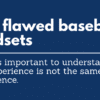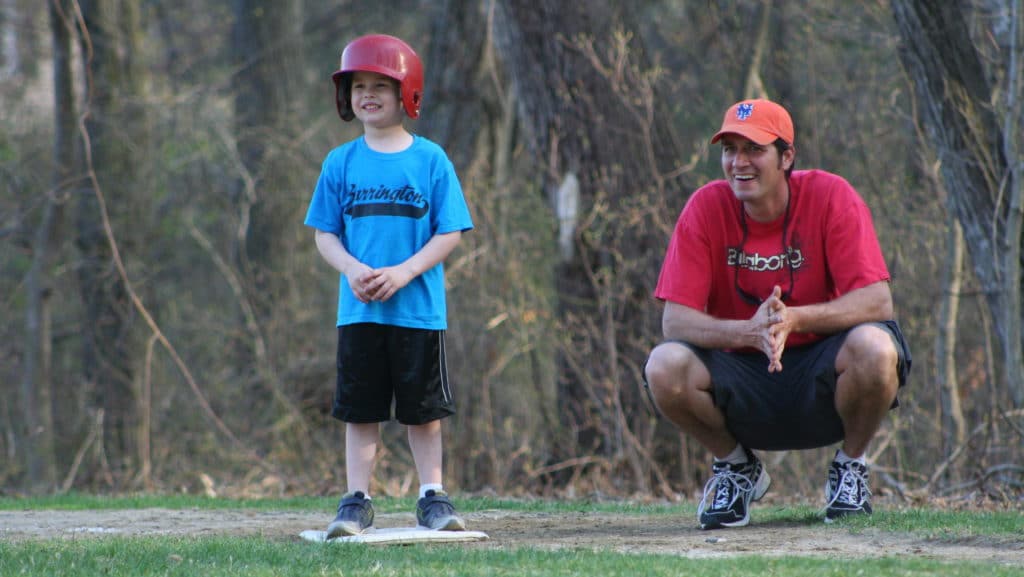Most amateur baseball teams spend too much time taking routine batting practice and not nearly enough time hitting full-speed, count-based pitching.
At the college level, live simulation — i.e., batters going up against pitchers who are throwing at or near game velocity, and who are using at least one secondary pitch — is a key component of both pre-season and in-season training.
That’s because while standard batting practice has a number of positive outcomes, it’s impossible for a coach to replicate the trajectory, movement and pitch selection hitters will face in games. This is due to the fact that coaches are throwing from a shortened distance, off flat-ground and at a reduced velocity.
Live arm simulation should be a regular part of any team’s practice agenda for the following reasons:
- Hitters need to see game-velocity fastballs that have movement, and which come from a variety of arm angles.
- Hitters need experience adjusting to changes in velocity do to the use of secondary pitches.
- Hitters need practice identifying and handling secondary pitches, depending on the situation and his or her approach.
- Hitters need practice managing the count—especially with regard to handling secondary pitches when behind in the count.
- Hitters need to develop appropriate hitting approaches (i.e. pre-selection of pitches). Standard batting practice tends to put the ball more or less in one area (around the plate), since the point of the drill is skill development and confidence building rather than luring hitters into swinging at marginal pitches.
One of the most frequent and compelling criticisms levied against live arm simulation is that hitters don’t see enough hittable pitches to justify the time spent on the drill.
As I noted earlier in this post, I think standard batting practice is important. However, I also think players need an appropriate balance of multiple types of hitting practice, and that that balance should be designed to create a bridge from skills development to in-game performance.
So to that end, my criticism is not about standard BP in general, but about its overuse at the expense of simulation.
It may be true that the greater number of hittable pitches a player sees, the better that hitter will become. It’s unlikely that a positive increase in the number of BP repetitions would have a negative impact on that player’s performance.
I suspect, however, that at a certain point those repetitions suffer from diminishing returns. I also suspect that at some point, the opportunity cost of providing hitters with an excess of hittable pitches at the expense of game simulation is very high.
That’s because all hittable pitches are not created equal. A 70 mph fastball with no movement when you’re locked-in for fastballs is not the same an 85 mph fastball in a 1-2 count, even if all other aspects of the pitch (such as location) are the same.
I can’t tell you how many times I’ve heard a coach describe a player as “a great BP hitter” who can’t seem to consistently get the job done in games. When I hear this, I wonder how many real or simulated “at bats” that player has had so far during the season compared to how much time that player has spent squaring off flat fastballs.
Coaches that rely solely on providing hittable pitches without facilitating sufficient game simulation are essentially asking players to move directly from isolated skills development into full-speed skills application. In no other sport are athletes expected to make that leap.
It would be like having a basketball player work on jump shots over and over and over, but never having him practice taking those shots after cutting at full speed with a hand in his face.
BP gives players hittable pitches in succession so that they can work on their swings without having to account for in-game factors like secondary pitches, but the actual game does not give hitters the opportunity to settle into a rhythm and make a number of adjustments until they’re smashing line drives all over the field.
Rather, the game (which we must always remember is what we’re training players for) gives hitters one or two chances to apply the skills they’ve developed when facing down a pitcher who is sincerely trying to get them out.
The core challenge of the sport is effectively utilizing your hitting tool once, after you’ve been waiting for perhaps thirty minutes. Players need to be able to identify bad pitches and hit the one good pitch they see, the first time, without making any adjustments. We as coaches need to give players the experience to be comfortable and succeed in that environment.
Baseball is a slow game that requires focus and patience — exactly the opposite of what standard BP teaches. So we need to find ways to funnel that valuable practice into actual in-game execution, and we must be weary of the assumption that the link between the two is automatic.
My recommendation is to incorporate some amount of live arm simulation into all practice agendas.
Teams that practice every day should probably use simulation at least twice per week, giving core players at least 2 or 3 at bats.
Teams that practice only twice or three times per week, including those at lower lower levels (such as Little League), should consider using an adjusted count format (such as starting hitters with a 1-1 or 1-2 count).
Personally, I often utilize adjusted counts even at higher levels because I am particularly concerned with the pace of practice.
Here are a few notes on using live arm simulation that are worth keeping in mind:
1. When using live arm simulation with pitchers who are having command problems (such as Little Leaguers), you can dramatically increase the pace of the drill by using a 2-2 adjusted count and quickly rotating players in and out of the box.
You can also use this time to work on live defense (i.e., with base runners) if your pitchers are unable to provide hittable pitches. Just have a coach with a fungo ready to provide a playable ball.
2. You only need a pitcher, catcher and hitter for sim work. While you can use the time for defensive practice if you so choose, there is no need whatsoever to have your team standing around waiting for a ball.
3. Pitchers should throw new (or newish) baseballs during sim. First of all, hitters should never face brown balls at full speed because they’re too difficult to see and pose a safety hazard.
But from a training perspective, you want your hitters to see the same color ball they’ll actually be trying to hit in a game, since the point of simulation is make the at bat feel as real as possible.
Likewise, pitchers will get more action using balls that haven’t been weighted down with moisture or clay.






